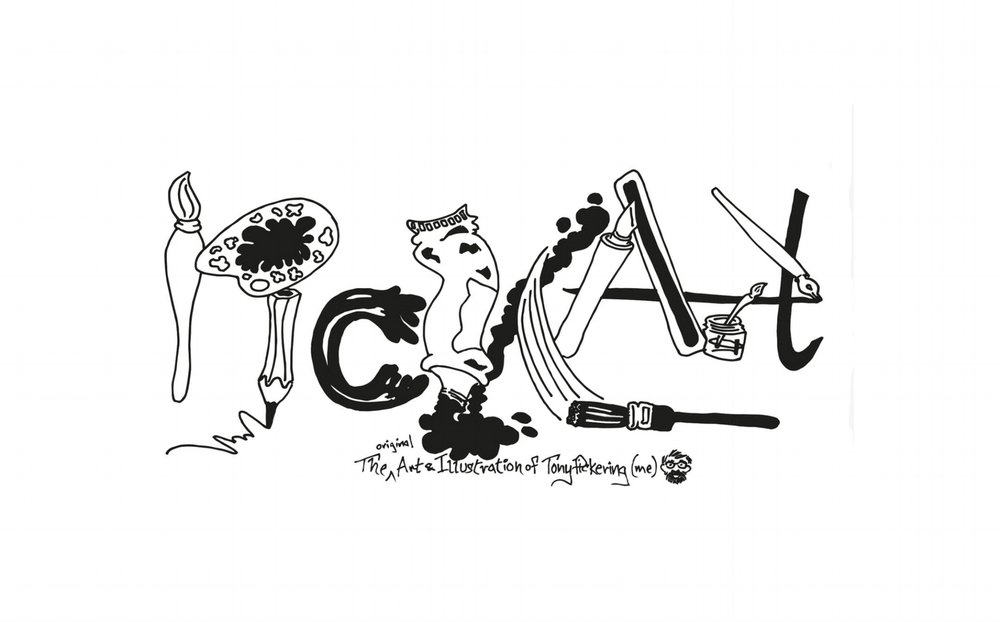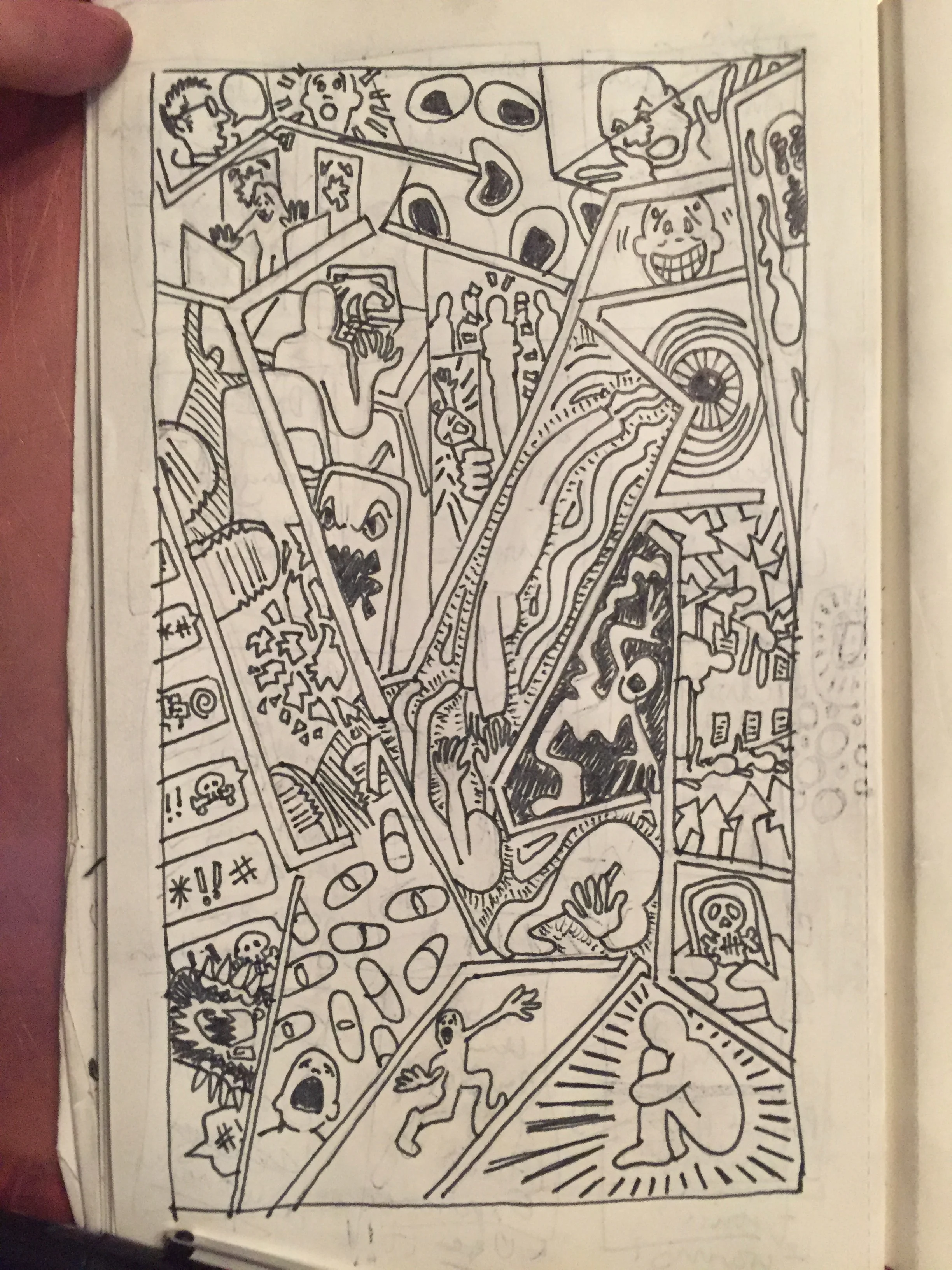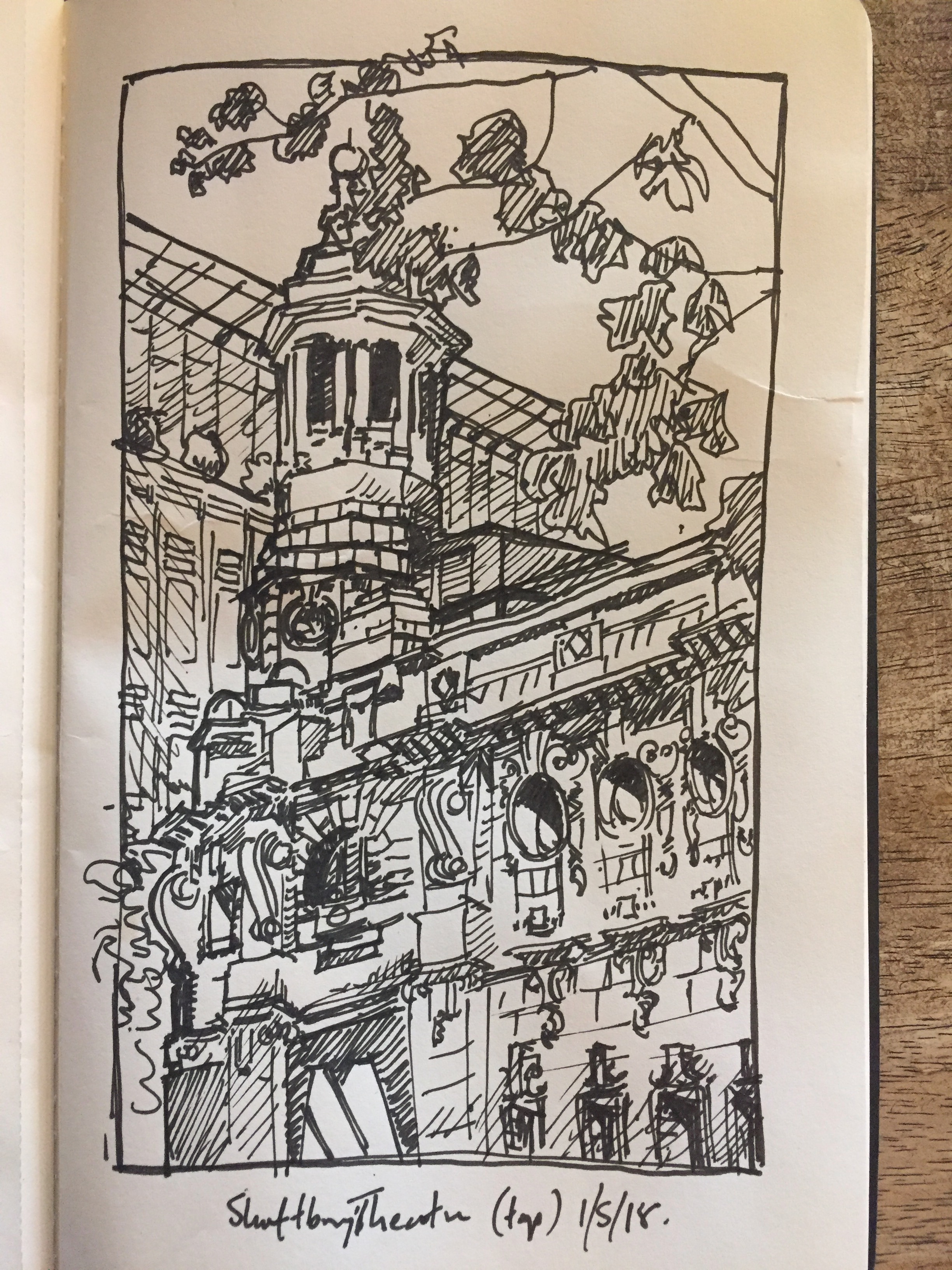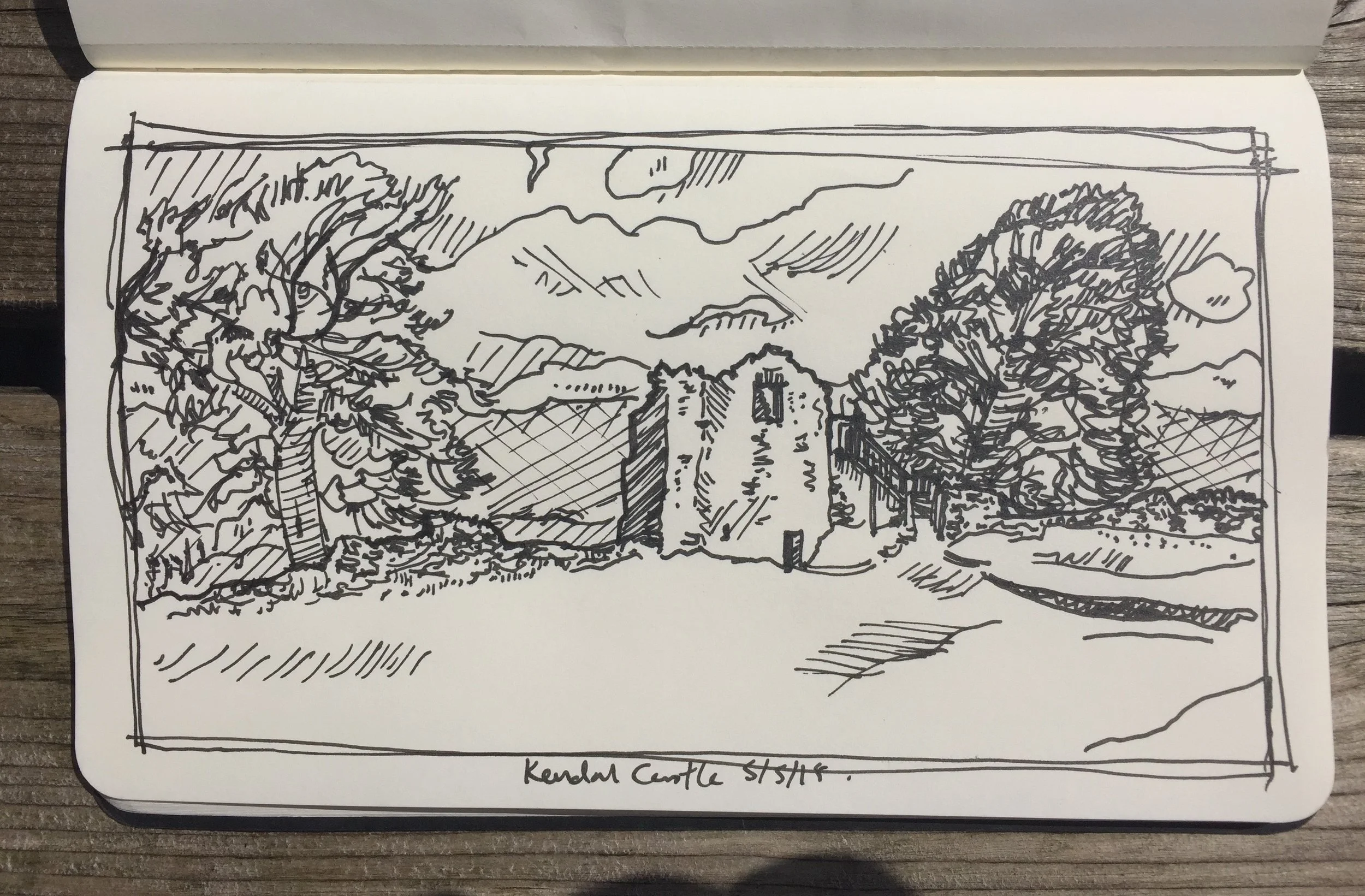Shrieks of seagulls, and the rumbling of the tide greets me as I wake this morning.
Outside the sea is calm, rippling to the horizon, broken by the jutting seawalls and the odd boat bobbing into view. Clouds sweep across the panorama – skipping through shades of grey to meet the clear sky in the distance.
A quick seaside break over the bank holiday brings these new sights and sounds as a stimulus to recharge and rethink, and I am reminded how travel provides the chance for me to reflect on my work, but more importantly gives me the impetus to imagine ideas.
fig.1 mental health
fig.2 Shaftesbury Theatre
fig.3 Denmark Street
I want to think about a piece in progress for this blog [fig.1], one that began on a trip, in a quiet moment between travelling from and to, whist going to speak about Diabetes: Year One as a way of enabling patients through art. I like to arrive early if I can – to give myself time to wonder around a different space, often to sketch places to try and understand them better [fig.2,3 & 4].
fig.4 Kendal Castle
These quiet moments are often the best time to lose yourself in an idea that’s been at the periphery of thought for a while.
This sketch takes the idea of M.C. Escher’s Stairs and uses its play of perspective as a structure for a panel layout. The shifting plains demand a disruption to narrative which has intrigued me for a while; an approach that attempts to describe the layers and shifts of thinking that exist around mental health - and as it was mental health week when I was sketching, the topic seemed apt.
In terms of process this is the beginning - the sketch needs work, I will have to tweak line, and clarify certain panels, challenge some of my decisions and reflect on how to be, colour and shadow will interact - if at all. But at this stage it is about identifying the structure, creating the handholds of narrrative and just dealing with the maths of perspective and the imagination of scene. This to me is the grunt work, a process of drawing and re-drawing to fit the image in my mind - testing my imagination as object and establishing the relationships of logic or aesthetics as ideas start to meld.
Having just finished a project it’s nice to work on a personal piece - a mini project, where there is no one to blame but myself for the constriaints I have placed. It’s nice to get back to my own masoschism for a while.




